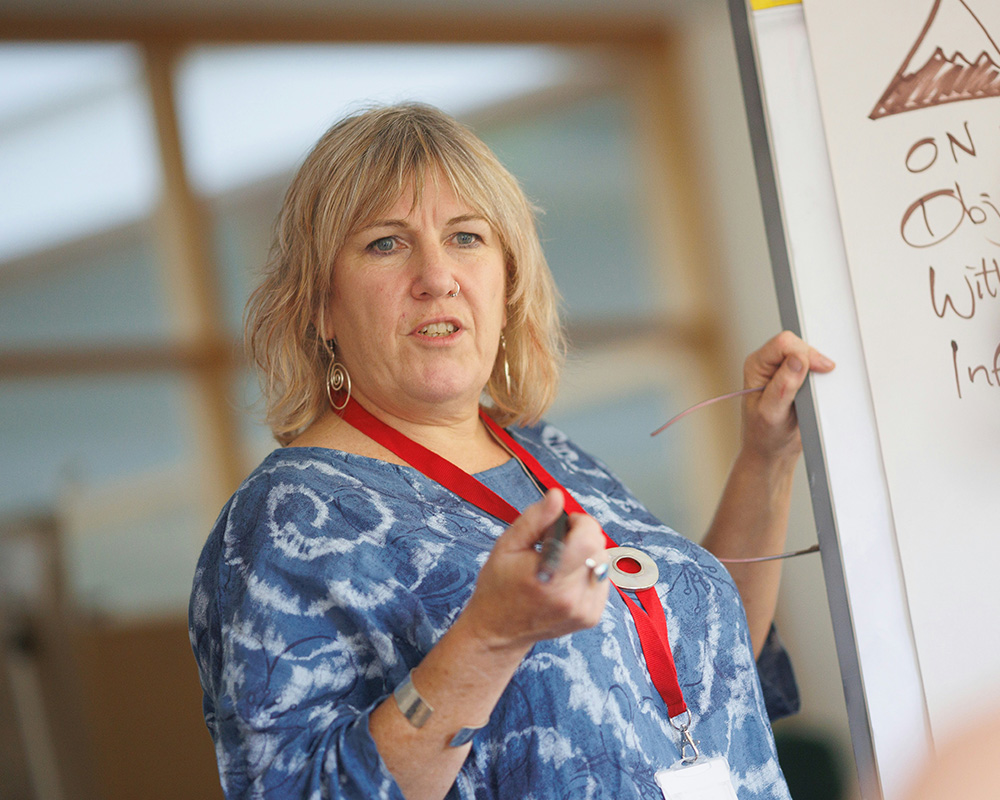Onboarding is a critical process for new employees. Far more than a checklist of compliance tasks, it’s the first tangible step in your employee’s journey with your organisation. In competitive markets, where top talent has options, the emotional and psychological experience of onboarding plays a crucial role in ensuring engagement and satisfaction from the start.
This blog explores the psychology of onboarding – from the relevance of a good first impression, to the importance of fostering trust and psychological safety, and how these reduce attrition and boost productivity. By understanding the psychological and emotional impact onboarding can have, HR teams can enhance and optimise their process. We’ll also look at how onboarding HR software can provide a structured, smooth and genuinely human onboarding experience.
Jump to:
- The emotional impact of onboarding
- Building psychological safety from day one
- Personalisation at scale: What role does human resources software play in reducing new hire anxiety?
- Long term benefits – from process to experience

The emotional impact of onboarding
Transitioning to a job is, for most, a big step. Even if you’re used to temping across multiple companies, each new organisation comes with its own firsts – from new locations and teammates to different values or processes.
Lessening anxiety around this transition, whilst fostering a sense of belonging, helps new hires settle into new roles (and become productive) faster.
Why every touchpoint matters: the power of first impressions
Onboarding isn’t just about what happens when a new hire steps through the door on their first day. To really understand the emotional impact of a good onboarding (and pre-boarding) process, we need to go way back to the very first interaction with your prospective new hire – that’s where it all begins, and here’s why it matters:
First impressions are a powerful evolutionary throwback, which our brains still use for protection:
“…the capacity to quickly distinguish friends from foe, and leaders from followers, was so crucial to the reproductive success of our ancestors that we have inherited an innately specified mechanism for judging others on the basis of their appearance.” 1
Whilst not always accurate, our initial perceptions can significantly impact how we interact with and perceive others, influencing everything from our friendships to career opportunities. You can read more about this in a short read from Psychology Today here.

So, how do first impressions during onboarding influence long-term employee satisfaction?
The first interaction you have with a candidate will form their initial assessment of your company. Are you professional and slick, are you warm and welcoming? From application receipt onwards, you are setting the tone for your future employer/employee relationship.
“Cold onboarding” characterised by a void of information or communication post offer can build significant anxiety, risk disengagement and even lead to early turnover. On the other hand, a well-structured onboarding process bridges this gap and quells fears – cementing the positive impressions you’ve worked hard to create during the recruitment process.
With the power of first impressions in mind, what psychological factors should HR teams consider when reviewing their onboarding journey?
When designing your onboarding workflows, key psychological factors to consider include psychological safety, managing potential anxiety, social anxiety, overwhelm or unease caused by too much (or a lack of) information.

Building psychological safety from day one
Psychological safety is paramount in the workforce. It allows employees to share their ideas, ask questions and admit mistakes without fear of reprisal. A sense of belonging is essential for this – and it’s fostered by listening, enabling self-expression and building trust.
According to CIPD research:
“In a psychologically safe work environment, people tend to be less defensive and focus on accomplishing team goals and preventing problems, instead of just protecting themselves.” 2
How does this work in practice, and how can it be embedded in the onboarding process?
A dedicated point of contact, structured expectations and a clear and supportive process all help to calm anxiety and build a critical foundation of trust from day one. Bridging knowledge gaps, offering training and implementing mentoring/buddy systems also go a long way to reducing anxiety.
How can Applicant Tracking System (ATS) employee onboarding software help build trust and connection from day one?
Tech-enabled onboarding doesn’t have to feel robotic. Recruitment and onboarding software can build a sense of trust and reliability through personalised, scheduled communications. Designed to automate compliance heavy administrative tasks, ATS also frees up HR teams to focus on building meaningful connections with new hires.

Personalisation at scale: What role does human resources software play in reducing new hire anxiety?
A personalised approach is essential for onboarding; no one wants to feel like another cog in a wheel, they want to feel seen, recognised, valued and important. When employees feel this way trust grows swiftly, and anxiety is reduced.
Smart ATS and onboarding software makes personalisation possible at scale. Recruiters can segment and tailor onboarding journeys by role, department or location – for a truly personalised experience, no matter how many hires you’re onboarding.
- Communication
Onboarding software empowers Hiring Managers to communicate directly with new hires. Whether that’s sending training videos, policy documents, a custom ‘new starter’ pack or simply setting clear expectations for the role. This level of direct communication reduces anxiety and builds connections with new team members.
- Compliance
With clear audit trails and automated workflows, smart onboarding software ensures compliance is covered – from GDPR to pre-employment checks. It also securely triggers the transfer of personal details to payroll and HR systems – demonstrating professionalism, reliability and building trust.
- Personalisation
Dedicated, tailored onboarding journeys show new hires they matter. Every automated touchpoint builds credibility, and trust.
Clearly laid out onboarding journeys, which set expectations for new hires, build connections and ensure no message or query is missed, help reduce anxiety and grow confidence.
How does ATS blend workflow efficiency with meaningful engagement during onboarding?
The beauty of using onboarding software is that human resources teams can relinquish administrative tasks to the ATS, safe in the knowledge that they are being securely executed. This in turn allows teams to focus on what they do best – build meaningful connections and model company values, and messaging.
By reinforcing the positive first impressions candidates gained during the recruitment process, fears are allayed, new hires know exactly what to expect on day one and will feel a sense of excitement about their new role, rather than a fear of the unknown.

Long term benefits – from process to experience
It’s no surprise that there’s a strong connection between a well-executed onboarding process and improved employee retention. Early churn is costly to employers and a thorough onboarding process can dramatically impact that figure and drastically reduce hiring costs.
How can recruitment and onboarding software improve retention and reduce early-stage turnover?
Using dedicated recruitment and onboarding software supports long-term engagement. It provides a familiar point of access, offers structured and scheduled communication, and supports the development of relationships with individuals, even when hiring at scale. Customisable, personalised pathways make new hires feel valued and engaged, while well-structured administration demonstrates organisational capability and quells anxiety.
Beyond the automation of onboarding workflows, the true power of an ATS lies in the data it collects. Teams can review and optimise onboarding based on solid analytics. They can also schedule regular feedback touchpoints for candidates throughout their onboarding, gaining valuable information to inform and refine the process further.
Why is it important to include emotional and social elements in your onboarding strategy?
Human beings are emotional creatures. We’re not robots, or cogs in a wheel. We spend a huge amount of our life working, and happier employees are unquestionably more productive. Our emotions and psychological wellbeing are intrinsically linked to the jobs we do in our daily life. So, it’s vital we acknowledge that during the onboarding process.
By reinforcing organisational values, celebrating diversity and demonstrating that people can bring their true selves to work you can provide a positive and engaging onboarding process that builds those all-important emotional connections.
It’s important to note that our time at work isn’t just about work either – we’re sociable creatures. Introducing team members, using buddy systems and even inviting people to join social events or visit your social channels for a “glimpse behind the scenes” before joining is a great way to ease social anxiety and provide a true sense of community.

Reach your full onboarding potential
It’s easy to see onboarding as a series of check boxes to prepare for your newest hire. But when you take a psychological approach to onboarding and use the right software to structure and streamline your process, you’ll soon find that your onboarding experience becomes an incredibly positive one.
Reducing anxiety, promoting psychological safety and building trust through a thorough and well considered onboarding process will reduce early churn and position your new hires for success. And that’s a win-win for everyone.
If you’d like to know more about how our intuitive, customisable ATS supports teams optimising their recruitment and onboarding journeys, then Reach out and book a demo today.
Want to read more? Read our blog on How Onboarding Software Can Reduce New Hire Turnover, and Increase Employee Satisfaction Rates.
References:
1.Ritual and the origins of first impressions; Harriet Over, Adam Eggleston and Richard Cook (29/06/2020) https://royalsocietypublishing.org/doi/10.1098/rstb.2019.0435
